Simulation Standard
Technical Journal
A Journal for Process and Device Engineers
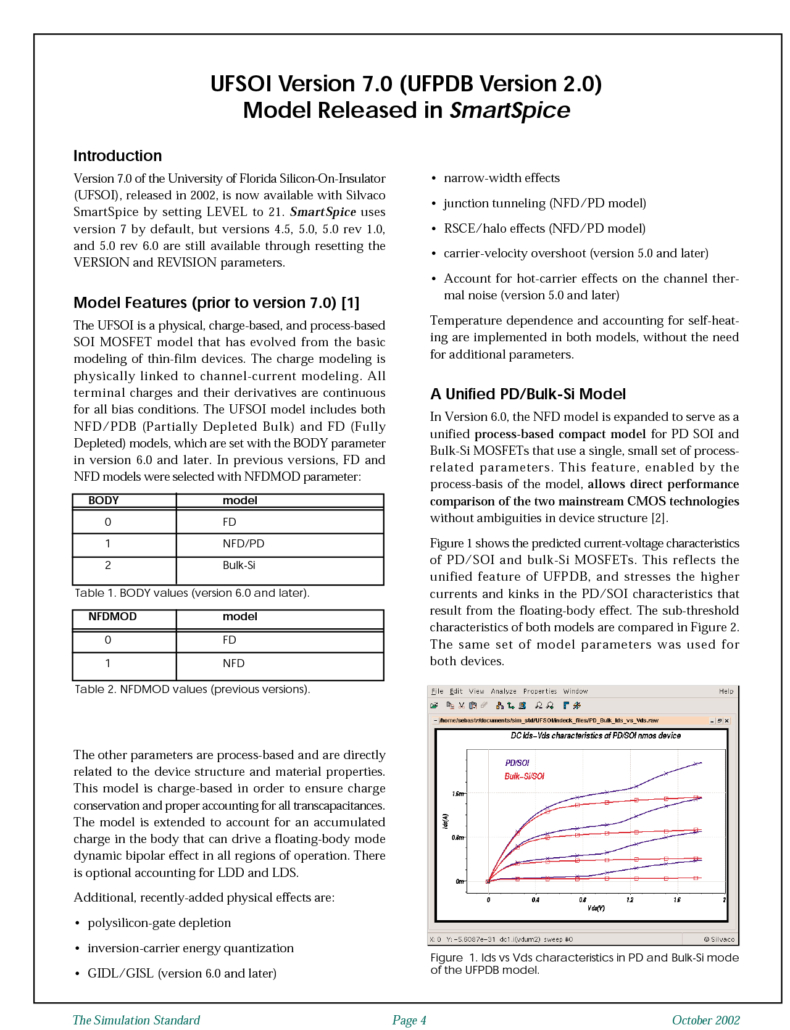
UFSOI V7.0 (UFPDB V2.0) Model Released in SmartSpice
Version 7.0 of the University of Florida Silicon-On-Insulator (UFSOI), released in 2002, is now available with Silvaco SmartSpice by setting LEVEL to 21. SmartSpice uses version 7 by default, but versions 4.5, 5.0, 5.0 rev 1.0, and 5.0 rev 6.0 are still available through resetting the VERSION and REVISION parameters.
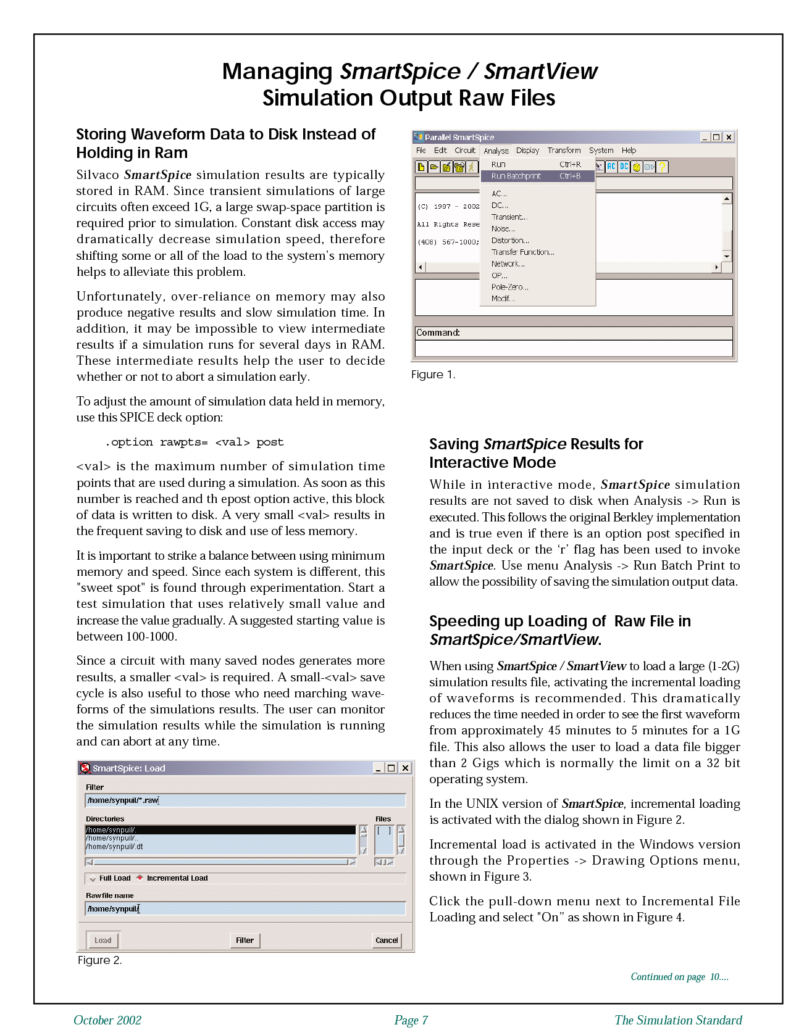
Managing SmartSpice / SmartView Simulation Output Raw Files
Silvaco SmartSpice simulation results are typically stored in RAM. Since transient simulations of large circuits often exceed 1GB, a large swap-space partition is required prior to simulation. Constant disk access may dramatically decrease simulation speed, therefore shifting some or all of the load to the system’s memory helps to alleviate this problem.
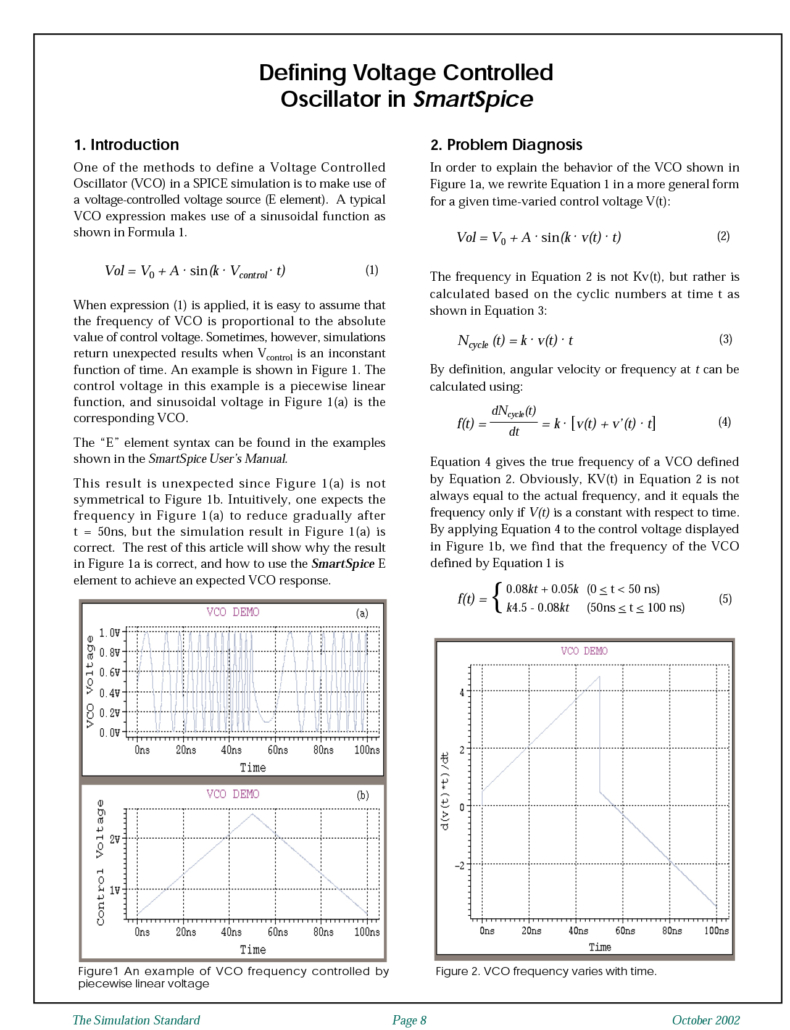
Defining Voltage Controlled Oscillators in SmartSpice
One of the methods to define a Voltage Controlled Oscillator (VCO) in a SPICE simulation is to make use of a voltage-controlled voltage source (E element). A typical VCO expression makes use of a sinusoidal function as shown in Formula 1.
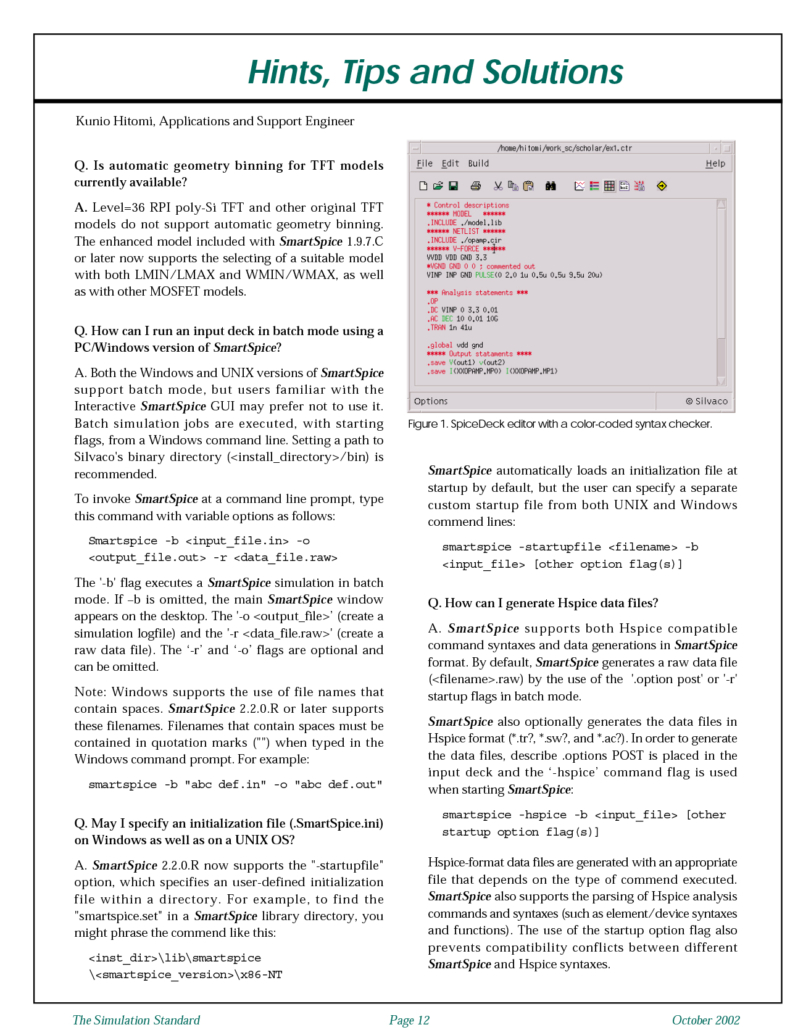
Geometry Binning for TFT models and SmartSpice Tips
Level=36 RPI poly-Si TFT and other original TFT models do not support automatic geometry binning. The enhanced model included with SmartSpice 1.9.7.C or later now supports the selecting of a suitable model with both LMIN/LMAX and WMIN/WMAX, as well as with other MOSFET models.
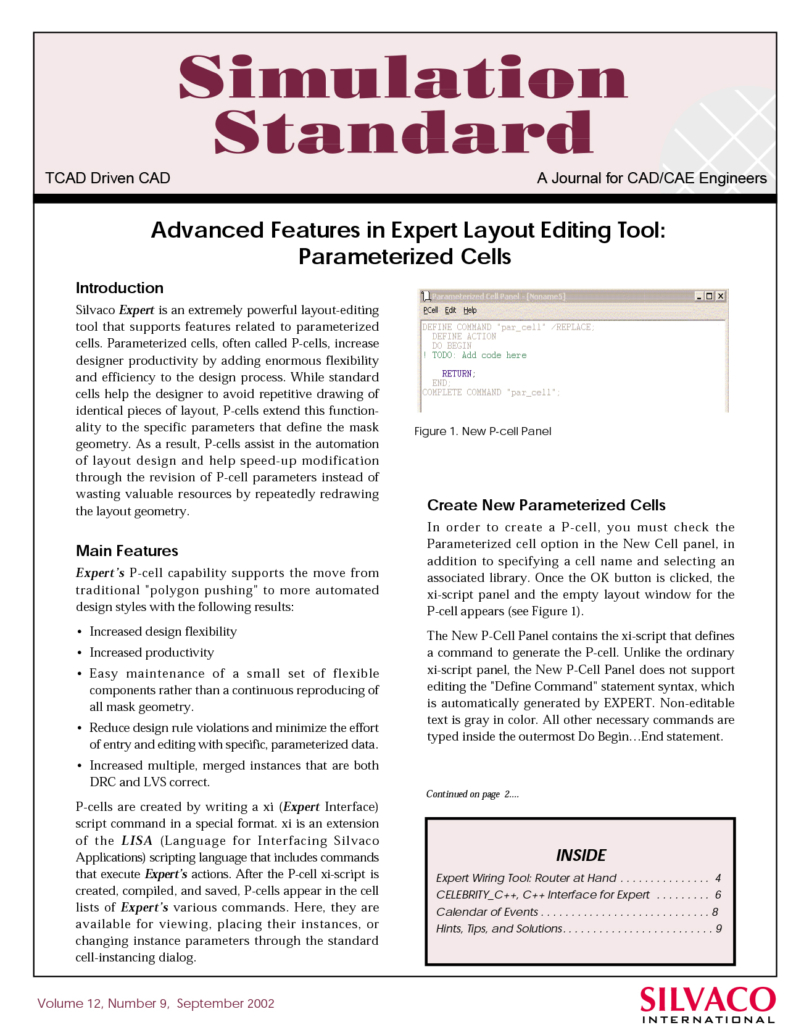
Advanced Features in Expert Layout Editing Tool: Parameterized Cells
Silvaco Expert is an extremely powerful layout-editing tool that supports features related to parameterized cells. Parameterized cells, often called P-cells, increase designer productivity by adding enormous flexibility and efficiency to the design process. While standard cells help the designer to avoid repetitive drawing of identical pieces of layout, P-cells extend this functionality to the specific parameters that define the mask geometry. As a result, P-cells assist in the automation of layout design and help speed-up modification through the revision of P-cell parameters instead of wasting valuable resources by repeatedly redrawing the layout geometry.
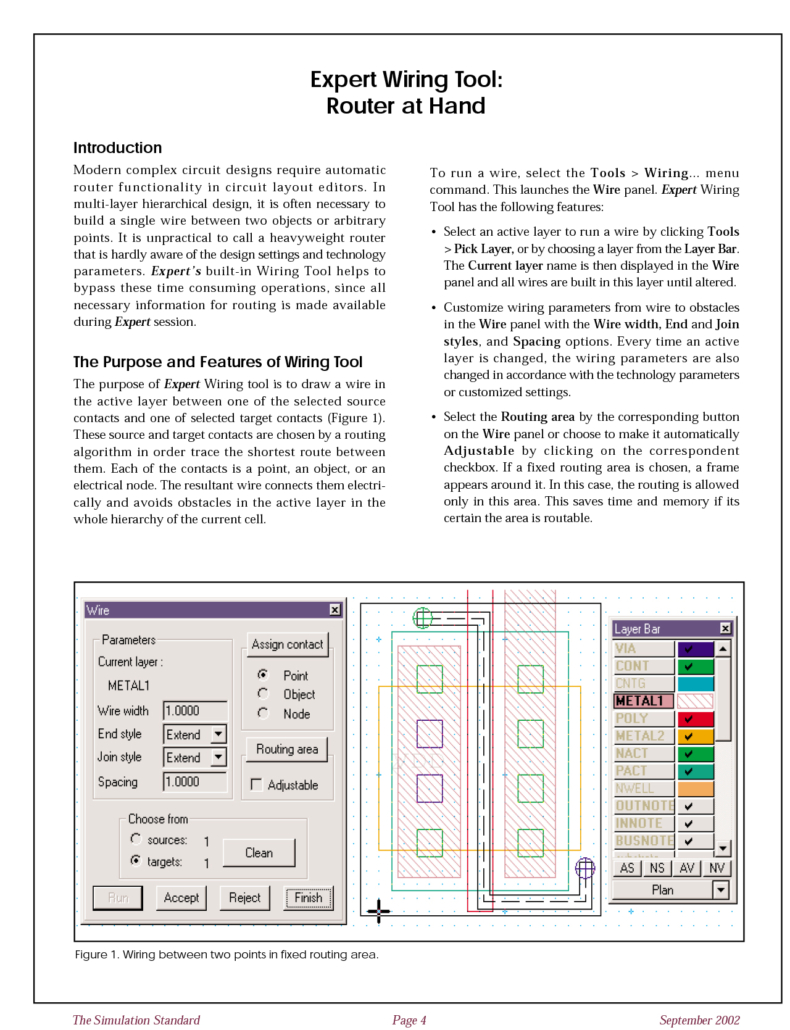
Expert Wiring Tool: Router at Hand
Modern complex circuit designs require automatic router functionality in circuit layout editors. In multi-layer hierarchical design, it is often necessary to build a single wire between two objects or arbitrary points. It is unpractical to call a heavyweight router that is hardly aware of the design settings and technology parameters. Expert’s built-in Wiring Tool helps to bypass these time consuming operations, since all necessary information for routing is made available during Expert session.

